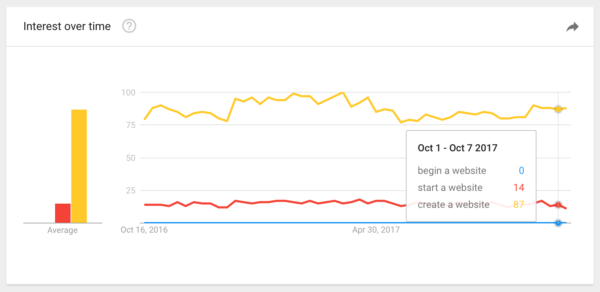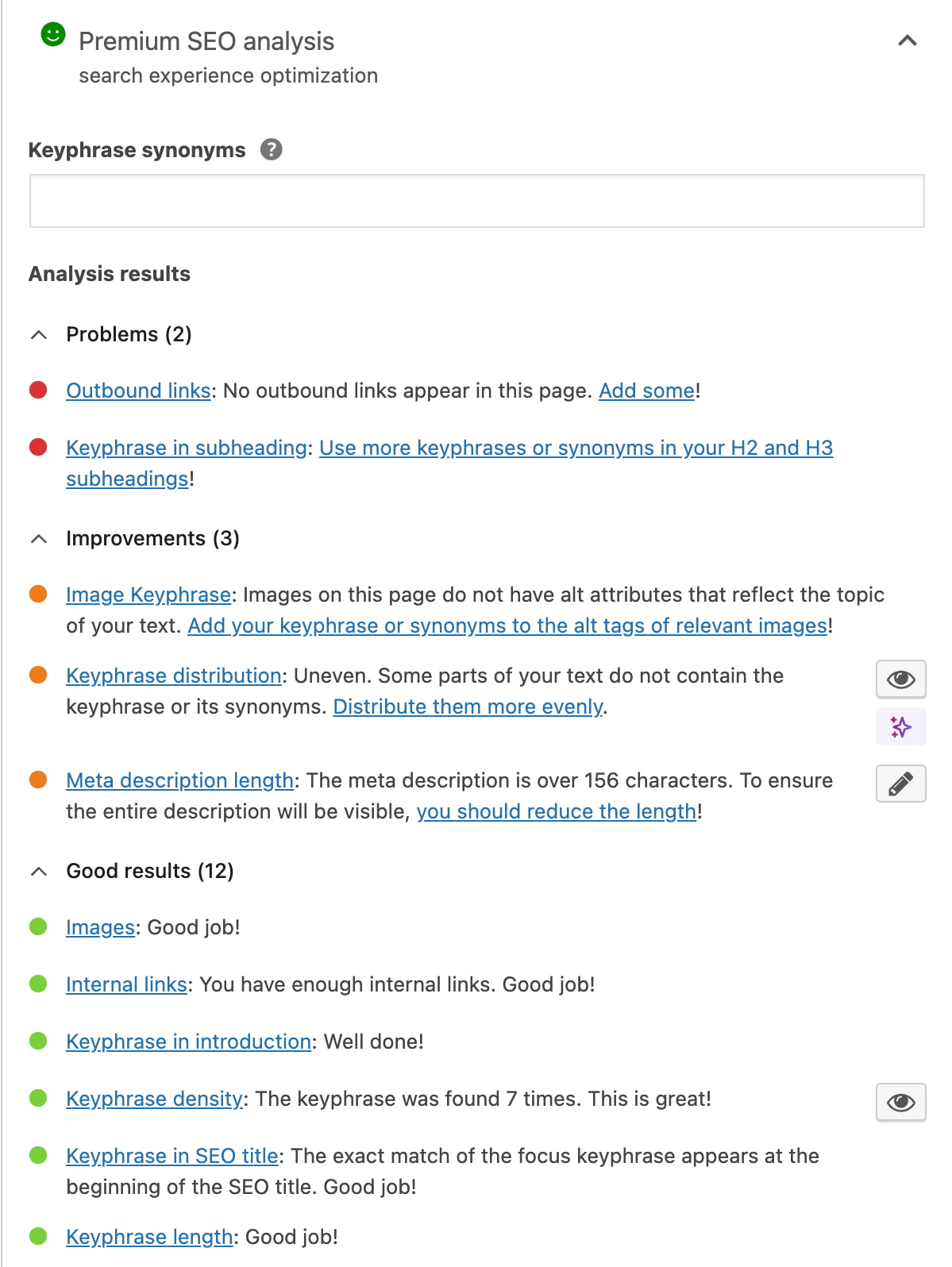Create a website with SEO in mind: Content optimization

If you make a website from scratch, you need to consider a few SEO-related things. Doing this right from the start is incredibly important, as that will prevent many future headaches. Speed optimization and the right use of heading tags help improve your website for both your visitors and Google. I am sure you have covered the technical basics we described in the first part of this article. Just be aware of what you are doing, add focus and you’ll be fine. The greatest challenge begins when you start adding content to your website.
In this article, we’ll review several steps everyone who creates a website should take when optimizing content.
Filling the website with content
You can optimize the entire technical side of your site and still find it lost on page two or more in Google. SEO isn’t a trick. It isn’t something your web developer can do for you. It’s something you can get guidance in, for instance, with our SEO courses, in our Yoast SEO (Premium) plugin or Yoast AI Optimize features.
But first and foremost, SEO is Seriously Effortful Optimization. It is a continuous process and something you, as a website owner, should make a strategy for. If you make a website, be prepared to write valuable content about the topic/purpose of your website. And that process starts with a bit of research.
Read more: 10 reasons why you should use WordPress »
Keyword research
Speaking from experience, I have often seen product manufacturers describe a product from their point of view. For example, our Yoast SEO Premium plugin has an internal linking feature that analyzes what posts on your website best match the content you write in your new post. You can copy that link from the WordPress sidebar and paste it into your post, to optimize your site structure. How awesome is that? Well, it might not sound so awesome to the user. They’re probably wondering what exactly they’re gaining with this feature. From a developer’s point of view, the description matches the feature. But for the user, the description should be:
Our internal linking tool allows you to create valuable links to all pages of your website, which will help these pages to rank in Google.
And even that might be a bit technical. In your keyword research you should focus on customer lingo first: how do people call your product? Find the right keywords and start writing. Want to learn more about keyword research? Take our keyword research training course for more insights.
Setting up the menu and site structure
In that same SEO copywriting training, we continue the SEO process for your website with the next step: site structure. You can even take our site structure course for more on this subject. Don’t underestimate the importance of a good structure. It’s the foundation of your visible site. Setting up a proper site structure right when you start a website will make optimizing your content so much easier.
As Marieke put it:
Your users need the structure to navigate through your site, to click from one page to the other. And Google uses the structure of your site in order to determine what content is important and what content is less important.
That’s a quote from our ultimate guide to site structure. It’s as simple as that. Optimizing the site structure influences your pages’ SEO, UX, and crawling. Let’s not forget that the right structure makes maintenance so much easier.
A good site structure will also help highlight the most important pages for your users. Include these pages in your (main, sub or footer) menu. As with customer lingo, use the data collected from Google Analytics to find the pages your visitors like most, and use these in your menu. Read more about optimizing your menu here.
One page per topic
Keyword research is done, the structure is set up, so now we can start writing. And we’ll create one page per topic. Need more pages to elaborate on a topic? Then feel free to do so, but use a new, long tail keyword for every new page.
Using one focus keyword per page, you force yourself to make a hierarchy in your collection of keywords, something you already started when doing your keyword research.
A small step back to keyword research
Now I see you thinking about this focus keyword and the analyses in our plugin during your writing process. You know that feeling when you check keyword density and wonder what to do with synonyms? The first thing to do here is to check Google Trends. Let’s say we optimize for (just an example!) “create a website”. A synonym is “start a website”. Google Trends tells us the main keyword should be “create a website”, see graph here:

But we use “start a website” a lot and want to include that phrase in our post as well. In the Yoast SEO Premium plugin, I can simply insert a second focus keyword. Overall keyword density should be right in that case (check both keyword tabs), as we know Google treats them as the same keyword: If I search for “start a website”, “create a website” is also a highlighted (bold) keyphrase in the results. “Make a website” is also a valid synonym. Just a small peek into the way I approach this myself.
Title tags
Using the focus keyword we mentioned earlier, creating a great SEO title for your page is easy. Google still values that title highly, so put some effort in improving it. We usually use the title as the main article heading (or the H1 we mentioned in part 1 of this post). Besides that, it’s used as the most important part of the actual <title> tag, the tag that also defines your title in Google’s search result pages. This tag is not only visible when someone shares your post on Facebook or Twitter, it’s also used when someone bookmarks your site.
Optimize the title page according to these guidelines »
Optimize your content
Here we go: use Yoast SEO to optimize your page’s content. I’m just going to tell you that again. And if you don’t use WordPress, that’s no excuse anymore. We have Yoast SEO for Shopify, Neos and TYPO3 these days.
Our SEO analysis will tell you, every time you write a post or page, what can be improved on your content:

Read our SEO blog, as there’s a ton of free information about content optimization in there. And subscribe to our newsletter to keep your knowledge up to date.
How about meta descriptions?
I felt the need to mention meta descriptions at least here. Most SEO plugins, plans or whatever, mention meta descriptions as a must-do. I agree to a certain level. If you can write a nice, optimized ‘invitation’ to your website, you should add a meta description to your product pages. Usually, there is so much unrelated content on a product page (dimensions, manufacturer info, terms of service, etc.) that there’s always a risk that Google creates a meta description for that product page that doesn’t give the right information. So it makes sense to serve your own.
On regular pages and posts, Google will probably grab a piece of related content, including the keyword used in the search query. That makes a lot of sense for news sites, for example. Still, I recommend adding a meta description to all your important pages. Facebook will use it as a description as well. And usually, when setting up a page on your website, it’s not that much work to add, right?
Make a website today
So, with this second part about content optimization, we have covered the very basics of SEO related things you should take into account when you make a website. I am sure you can come up with more insights, more tools or any other help for people that want to create a new website. Please feel free to add these in the comment section below this post, our readers (and I) will appreciate that!
Now, start that website!
Keep reading: The ultimate guide to Content SEO »

